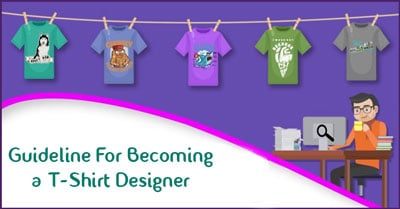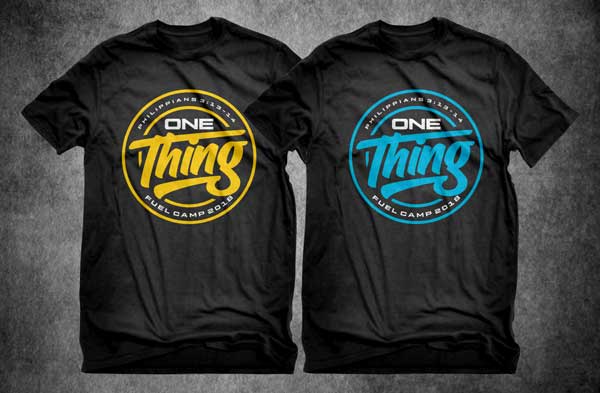Becoming a T-Shirt Designer: Where and How to Start?
Ever since I was a teenager, I have loved quirky T-shirts with witty slogans or striking graphics.
Over the 20 years that have passed since I started collecting Ts, the market has grown exponentially with new designs emerging from every corner.
I have managed to collect some great quirky pieces, but I’ve also seen a lot of stuff that left me thinking, ‘I could do better.’ About five years ago I put my money where my mouth was and started designing and selling my T-shirts.
Fancy becoming a T-shirt designer yourself? These are some the things you need to know to get started.
Table of Contents
Guideline For Becoming a T-Shirt Designer

Research Your Audience
Before you invest a lot of time, effort and money, you will seek to know that there is a ready market and that there will be people who would want to buy your T-shirts.
You will also want to know that your particular designs will appeal to them and at least some of your target audiences are likely to select your product over the millions available to them.
Big companies have entire departments dedicated to understanding who their audiences are and what they want. It is not easy to push yourself into competition with such a set up or plan of investment.
But at your level, there are things that you can do on your own.
Spend time researching the market online. Get information from the big guns by seeing who they are developing products for and what kinds of niches they are focusing on by checking out their top selling products.
Once you think you have identified an audience, spend time in public spaces watching for people in your target group and seeing what types of T-shirts they are already wearing.
Therefore, know the quality they are willing to spend their money on again.
Develop your Designs
Hopefully, you already had some ideas when you decided you were interested in designing T-shirts, and your initial research helped refine these.
Now, it is time to develop your designs.
At this stage of the process, iteration is key! You’ll probably need to make dozens of small changes to each design to get them just right. Also, share your designs during the iteration process with people you trust, especially if they are from your target market.
You should never take a single person’s opinion as representative of your entire audience. But at the same time, remember that your perspective can also be flawed, so it is good to cross check your ideas with others.
While you may be a dab stroke with a pencil when it comes to creating graphics, remember that to get your artwork onto a T-shirt, you are going to need it in digital format.
An excellent knowledge of working with Adobe Photoshop and Illustrator, or equivalent products, is a must to make your designs a reality.
If you are serious about T-shirt design, you will need to invest in the software, and if at all you do not know how to use it, training to get you up to speed.
While Photoshop and illustrator are general design tools, there are also some design softwares out there specifically for T-shirts.
Two of the best in the market at the moment are T-Shirt Factory Deluxe and Flash T-Shirts Software.
Make Mock-Ups
Once your designs are ready, you are going to need digital images of what your final product will look like, as well as examples of the physical product.
You will want these regardless of whether you want to build up a portfolio while you are looking for design work, want to try and sell your designs to retailers, or want to sell directly to the public. They will want to see the product!
Creating digital mock-ups of your final product should be relatively easy with the software that you used to develop your designs.
Printing actual products also shouldn’t be too difficult at this stage as most cities will have a variety of printers in the area. Short print runs as you will want for mock ups, are generally quite expensive.
But as a bonus, it will give you a chance to test out the quality of a printer before committing to a big run.
Select the T-shirts that you will print on considering color and quality. These are two factors that will put someone off buying a T-shirt, no matter how good the design.
Even if you aren’t selling your mock ups, it is imperative, as it can be difficult for people to see past gaudy colors and poor quality when assessing your designs.
Related Accessories:
>> T Shirt Printing Machine For Beginners
>> Vinyl Cutter Machine For T Shirt
>> Heat Transfer Vinyl For Shirt
>> Permanent Markers for Fabric
>> Product Photography Light Boxes
Sell and Evaluate
How you will go about selling your designs depends on what you want to achieve.
If you are looking for a design job at a big company, you’ll want a range of different designs, targeted at different audiences, put together in a portfolio.
You will also want to be able to speak to each design and discuss why you choose specific graphics and colors, and why you thought that they would appeal to the target audience.
The next step is to put yourself out there, applying for opportunities, approaching companies with your portfolio, and perhaps working with an employment agency that specializes in the market.
Put It Into Your Portfolio
If you are hoping to sell your T-shirts direct to retail, you may start to feel like you are on an episode of The Apprentice!
Though, unlike on The Apprentice, few stores are likely to buy off you if you walk in off the street brandishing your product.
Do your research to find stores that might be interested in your product and make an appointment to see the right person. Hit a confident pitch, and be prepared to negotiate.
Also, know your numbers! Will you be selling your designs or actual products?
If you are selling your designs, make sure you research the market rate and the standard contract. Remember that, in some cases, you could be selling the right to use your design in perpetuity, and perhaps sacrificing your right to use the design.
The compensation that you request should match that value. If you are planning on selling units, know your unit costs for producing the shirts, and then add a markup which compensates for your time and effort.
Be careful not to overprice the T-shirt for your target market when the retailer adds their mark up.
Knowing your unit costs is also essential when it comes to selling direct to the public, so you know how to price your products appropriately and competitively with other products on the market.
It is then a matter of getting your product in front of potential buyers. Get yourself out there physically by selling at street markets and fairs. Get yourself out there digitally by creating stores on platforms such as Etsy and Zazzle (and don’t forget to price up shipping options).
Push It On The Web
Remember, once your product is up on the online store, it is not a simple case of ‘design it and they will come,’ you need to maximize the possibility of it being seen.
SEO optimize your listings and create social media accounts for your brand. Use paid social media advertising, and work with social influencers (people with a large following on social media) to get your product noticed.
Conclusion
With so much to consider, getting started as a T-shirt designer can seem like a daunting task, but if you love the design and feel like you have great ideas, it can also be incredibly fun.
However, if you are looking to make money off your designs, coming up with the T-shirts is just the first step, it is selling your designs were the hard graft begins.

